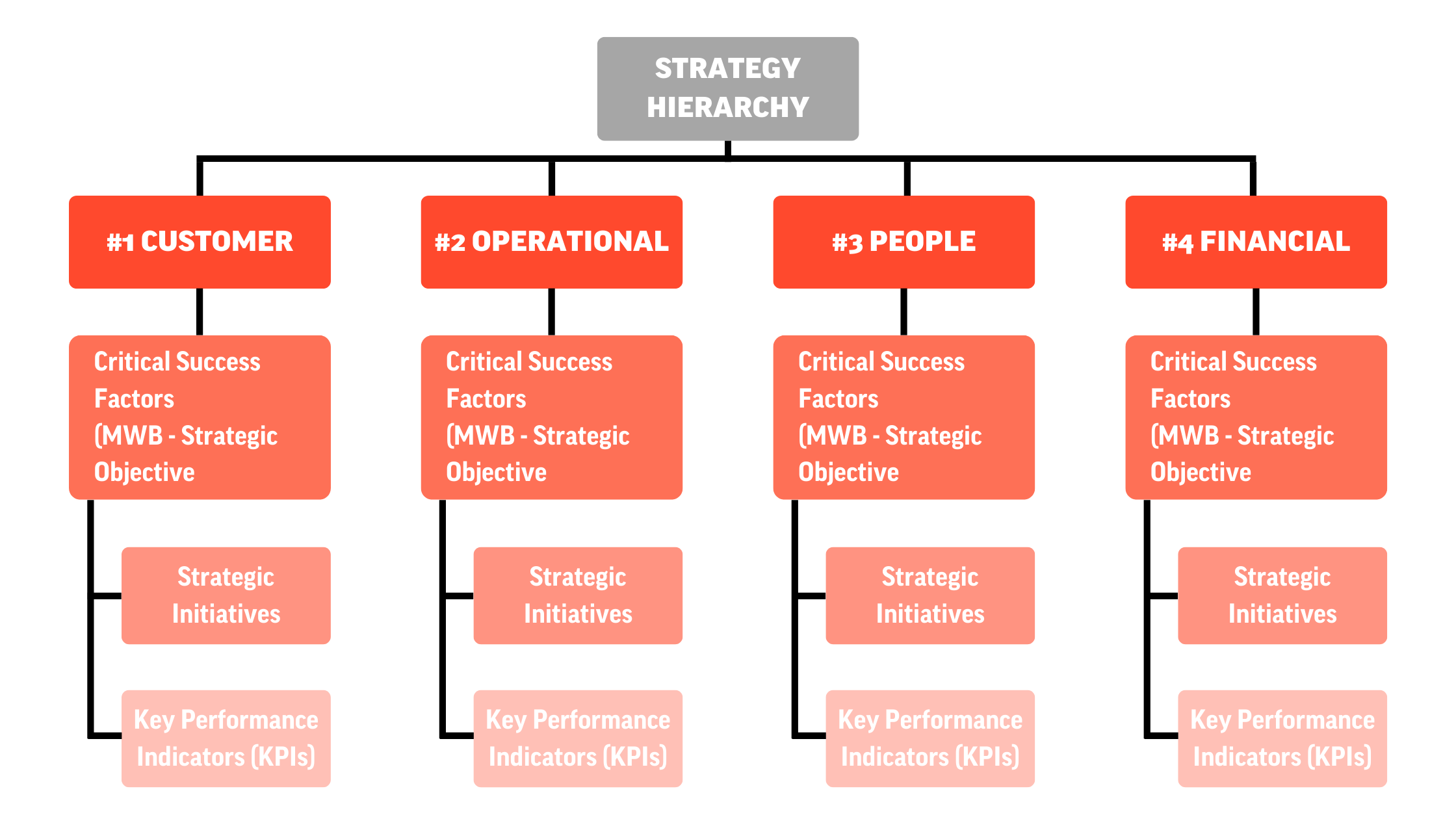Strategy VS Tactics: Differences and Similarities

You often hear of making a “tactical decision" to change a situation for the better—or to prevent something from happening. However, tactics cannot stand alone but are always linked to an overall strategy. So, what’s the difference between a strategy and a tactic? Read on…
When working with strategy, it is natural to ask: what is the difference between strategy and tactics? What do the two concepts mean? How do I distinguish? How do strategy and tactics complement each other when it comes to achieving a goal? And how can I use this to create better results?
First, it is important to be able to distinguish between the two concepts. It is a very common misconception that strategy and tactics are almost the same, and it is not unusual to see one term being used wrongly instead of the other. So, let's be clear: strategy and tactics are two very different things. The reason for confusion and misunderstanding is probably that the terms are often used in the same context, and in many ways, they are "related". Therefore, let’s get to the concepts and fully understand the difference between strategy VS tactics:
WHAT IS STRATEGY?
Strategy is a long-term plan to bring a person, a team, an organization, a company, a country, or even the whole world from a current state to a desired state.
WHAT ARE TACTICS?
A tactic is how the available means are used optimally to achieve a certain goal—usually in the short term. In strategic planning, tactics are thus linked to the initiatives needed to achieve the objectives or sub-objectives of the strategy.
The difference between strategy and tactics
A strategy is a specific objective and all steps required to achieve it. In sports, the strategy is usually either to win or to achieve a certain position in a competition. In business, it may be to achieve a specific turnover or position in the market. In military contexts, it is usually to defeat the enemy or defend a particular territory. Global strategies could include eradicating certain diseases or keeping the global temperature rise below a certain level.
Tactics include a precise description of which actions and measures, given the circumstances, are most likely to contribute to the success of the overall strategy. For example, in sports, if the strategic objective is to finish in the top four in a tournament, then tactics will need to be devised for each match and take into consideration the strengths and weaknesses of all players on both teams. Tactics can therefore be compared to a game plan, which is in fact a "mini-strategy", and perhaps therefore the two terms are often confused.
Combining strategy and tactics
Several tactics can be carried out within the same strategic goal or framework. If an organization’s goal is to be known as the most environmentally responsible in its field worldwide, tactics might include converting to renewable energy sources, using more responsible production methods, and launching a marketing campaign.
Tactics can be further broken down into tasks assigned to specific team members. This is the last link in what in business lingo is often referred to as "the strategic, tactical and operational level". The strategic level can be understood as the policy of the company or organization, where the strategic level represents the procedures put in place to follow the policy, while the operational level is where the execution takes place on a daily basis.

Simplified, these are the same levels that are reflected in the strategic hierarchy when the strategy and all its sub-elements are mapped to provide an overview of the factors that must interact in the execution of a strategy.
How strategy and tactics work together
It is widely recognized that for a strategy to succeed, there must be both top-down governance and bottom-up engagement. That is, there must be clear leadership and good communication around objectives and milestones, a delegation of responsibility, and empowerment of team leaders and employees. Also, there must be understanding, acceptance, and enthusiasm for the overall project among the employees who will translate the strategy into concrete actions at the day-to-day operational level.
A tactical decision is, so to speak, the glue that binds the strategic "wishful thinking" together with concrete actions. Because as Einstein said: "Nothing happens until something moves". To get from a current state to a desired state, something must move.
This means that strategy and tactics must work together. There must be a movement away from something and towards something else. It is in this movement that the declaration of something desirable is transformed into achieving what has been desired. Or, when it comes to strategy, nothing happens until the organization is engaged and begins to execute the tactical decisions that will ultimately lead to the delivery of the strategic intentions.
The Strategic, tactical and operational levels
The hierarchical structure of a strategic framework reflects in many ways the strategic, tactical, and organizational levels: what we call Pillars or Priorities is the strategic level—the Pillars are not up for discussion, as it is an imperative task to move the organization or company from A to B – from a current state to a desired state. Strategically, we operate with a long horizon and high uncertainty (as the conditions for a successful strategy execution are under the constant influence of changes that cannot be controlled).
The strategic hierarchy should include:
- Strategic Pillars (three to five areas your organization must excel in to be successful)
- Critical Success Factors (supporting the Pillars)
- Must-Win Battles (to help define strategic initiatives)
- Key Performance Indicators (KPIs) to monitor the progress of Pillars and Critical Factors.
A typical framework looks like this:

The purpose of this process is Focus and Clarity—to provide a structured overview of what matters most. This should include a thorough analysis of your situation and a roadmap of your organization’s potential while assessing its liquidity, optimization, and profitability. Corporate strategic focus formulated as Strategic Pillars is one of the basic elements of success.
Strategy vs tactics: Examples
Examples of strategies
As mentioned, a strategy is a long-term goal and something worth achieving. Here are some examples of business strategies:
- To be the global leader in our vertical.
- To be the most attractive place to work for tech developers.
- To be the number one relationship builder with customers.
For each Strategic Pillar/Priority, one or more Critical Success Factors (CFSs) are formulated. They determine how the Strategic Pillars/Priorities are supported in practice. In the example of customer relations, it could be improving the quality of leads to increase the value of each potential deal, making onboarding more efficient because happy customers are more likely to stay, and better account management as it can increase the value of existing contracts.
Examples of tactics
Tactics are what you decide to do to achieve a certain result. The question is: what is essential to get from A to B? At the tactical level, there are several options and different trade-offs to determine whether to go for one over the other. Based on the above example with customer relationships, two possible strategies could be considered.:
- Recruiting more salespeople and expanding the sales department
- Changing tack completely and outsourcing to external partners
This is a tactical decision. Here we operate with a shorter time horizon of less uncertainty (as we constantly adapt our decisions to the changes that occur).
The tactical decisions are followed by a concrete description of the actions to be carried out to succeed with the plan. These concrete tasks can be characterized as operational. For example, job advertisements are made to recruit salespeople or research is carried out among potential partners, and meetings are booked with them.
Turning strategy and tactics into reality
Once all the strategic and tactical aspects have been considered, formulated, and put into a framework with measurement points, key performance indicators, responsible departments/persons, and due dates, the strategy is in principle ready for execution. However, many find that this is where the hard work begins. Because how do you monitor a strategy and steer it safely to its goal? And how do you ensure that everyone in the organization is committed to making it happen? The most effective way to do this is to use a digital tool for strategy execution. See for yourself!










